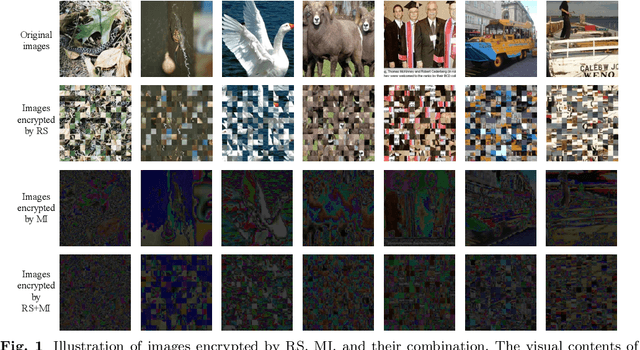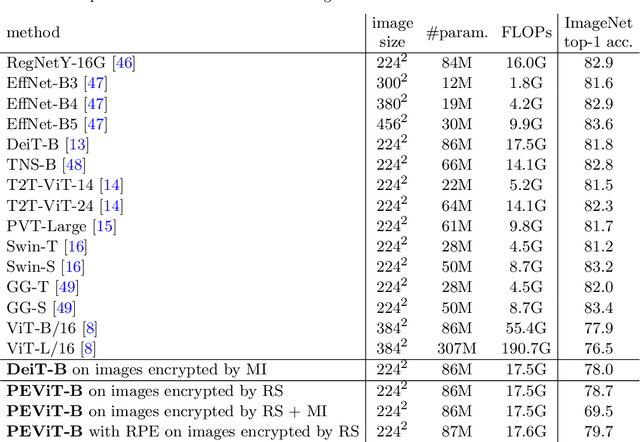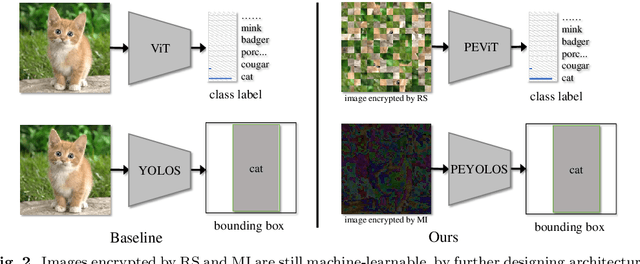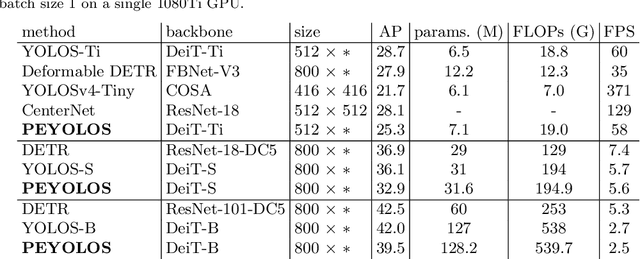Human-imperceptible, Machine-recognizable Images
Paper and Code
Jun 06, 2023



Massive human-related data is collected to train neural networks for computer vision tasks. A major conflict is exposed relating to software engineers between better developing AI systems and distancing from the sensitive training data. To reconcile this conflict, this paper proposes an efficient privacy-preserving learning paradigm, where images are first encrypted to become ``human-imperceptible, machine-recognizable'' via one of the two encryption strategies: (1) random shuffling to a set of equally-sized patches and (2) mixing-up sub-patches of the images. Then, minimal adaptations are made to vision transformer to enable it to learn on the encrypted images for vision tasks, including image classification and object detection. Extensive experiments on ImageNet and COCO show that the proposed paradigm achieves comparable accuracy with the competitive methods. Decrypting the encrypted images requires solving an NP-hard jigsaw puzzle or an ill-posed inverse problem, which is empirically shown intractable to be recovered by various attackers, including the powerful vision transformer-based attacker. We thus show that the proposed paradigm can ensure the encrypted images have become human-imperceptible while preserving machine-recognizable information. The code is available at \url{https://github.com/FushengHao/PrivacyPreservingML.}
 Add to Chrome
Add to Chrome Add to Firefox
Add to Firefox Add to Edge
Add to Edge